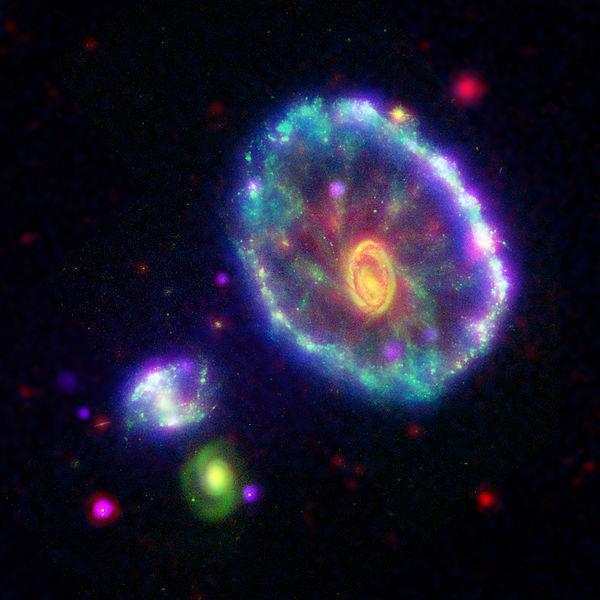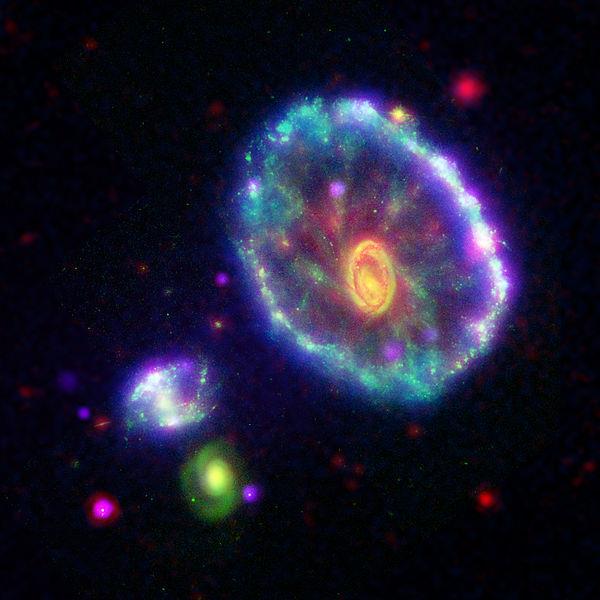

There is little doubt that this is one of the most uniquely beautiful galaxies in the known universe. This, my friends, is a lenticular galaxy known as the “Cartwheel Galaxy.” It looks more like a Ferris wheel to me, but what can I say? I didn’t come up with the name.
Found approximately 400 million light-years away from Earth toward the constellation of Sculptor, this image of the Cartwheel Galaxy (also known as ESO 350-40) is a false-colored composite, put together using 4 separate images taken of the region at various wavelengths. Infrared data (in red) was collected by the Spitzer Space Telescope, ultraviolet data (pictured in blue) came from the now-defunct ‘Galaxy Evolution Explorer‘ (GALEX), x-ray information (represented in purple) was derived from the Chandra X-ray Observatory. Finally, visible light data was gathered by the Hubble Space Telescope.
Astronomers believe the galaxy gets its rather unique shape from a collision with a smaller galaxy, which likely at took place several hundreds of millions of years ago. Prior to the collision, the galaxy was spiral in nature.
In the immediate aftermath of the event, the galaxy experienced ferocious cycles of star formation. As you can see, the outer bounds of the galaxy’s rim houses a large population of high-mass blue stars that live short lives, whereas the inner galaxy hosts more mature red-tinged stars.